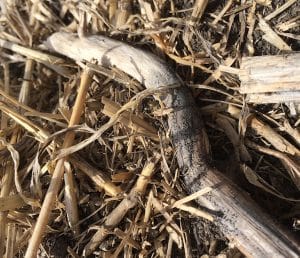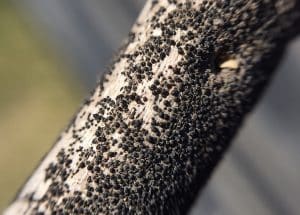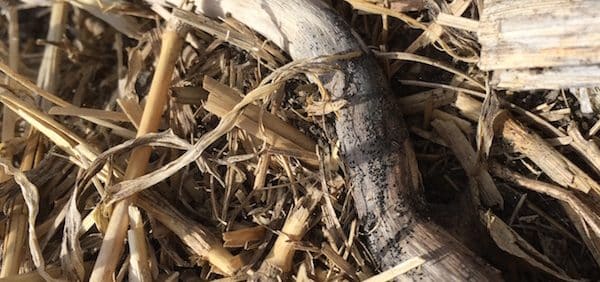The scouting protocol for blackleg disease is to clip stems at around 60% seed colour change (SCC) on the main stem. This is at or around the ideal swath timing. Scouting after swathing will still allow you to diagnose the disease, but this delay will amplify the disease severity – so this is not the time to assess how much yield the disease caused. For this same reason, scouting at combining is likely too late to accurately identify the amount of blackleg blackening of the stem. By then, other saprophytic organisms may have invaded the dried stems.
For crops left for straight combining, the 60% SCC “swath timing” stage is still the best time for blackleg scouting.
When scouting is done later, labs can identify the presence of blackleg, but they cannot (yet) determine the amount of blackleg or identify the blackleg pathotype present. Just a “yes” or “no” lab result does not have much utility for seed decisions as many (if not most) plants could have a trace amount of blackleg.
A different fall scouting angle. What you CAN do in the fall is check the amount of blackleg pseudothecia on several dozen canola stem pieces in fields that will go into canola next year. These spore-carrying stem pieces left over from the last time canola went on the field can last 2-3 years and provide a clue to the extent of viable blackleg spores in the field. Pseudothecia look like tiny dirt pieces that don’t easily rub off. In a “normal” field with previously low levels of blackleg, very few pseudothecia will be found. In a field at higher risk for blackleg, half (or so) of these pieces will have 50-100 dots of pseudothecia on each.
Scouting for these old, infected stubble pieces can be done in the spring as well, but by then seed is already bought.


Further reading:
Blackleg ratings and seed decisions
Blackleg resistance: Rotating difference resistance types
Blackleg.ca

